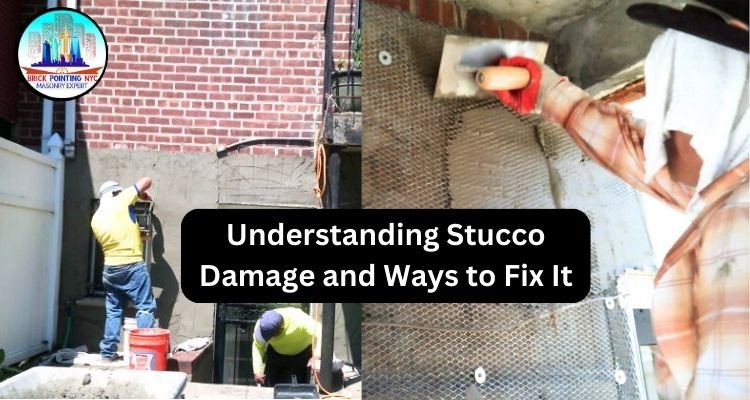The timeless beauty of stucco continues to attract us in every way, as it is one of the most preferred siding materials. For years, property owners have invested time and money in retaining the seamless look and finish of the stucco work. The longevity of stucco depends on its maintenance. Typically, the stucco on your building’s exterior can last for decades with adequate maintenance and preservation measures.
Nevertheless, stucco is susceptible to natural damage because of its constant exposure to harsh UV rays, moisture, dirt, and grime. As a result, stucco repairs Bronx become essential to boost efficiency and durability. It is not every day you go for a repair job. But whenever you need it, do not delay.
Stucco damage should be addressed immediately, but before that, you are required to understand the common damage signs to aid appropriate fix. So, we will learn about them first before digging into the repair procedures. Here it goes!
The Truth about Stucco Damage
Stucco is a sturdy masonry material used for building sidings. It is a mixture of lime, Portland cement, sand, and water. Stucco proposes a smooth surface finish with a classic appeal. Though it is resilient to harsh weather conditions, in cities like Bronx, Queens, Manhattan, Long Island, Brooklyn, and Richmond Hill, stucco exhibits early damage signs. Regular inspection by stucco contractors Bronx can help avert severe consequences.
How do you know you have damaged stucco?
- Soft Spots– Most stucco damages are caused due to water ingress. You may notice some specific areas that are soft to the touch. It indicates underlying damage which may have affected the internal framework.
- Cracks– Whether horizontal or vertical, cracks are highly detrimental. These are primarily caused due to temperature fluctuations, moisture exposure, and persistent freeze-thaw cycles. Immediately perform stucco crack repair to curtail the damage severity.
- Stains– Stucco stains are visually unappealing and often indicate red flags! There can be corrosion, mildew, or wood rot, leading to stains and discoloration. These are harmful to the structural integrity of stucco.
- Crumbling Stucco– If your stucco crumbles at the slightest touch, it means you have stucco failure. It can occur due to ageing, natural weathering, or weakening of the structure.
- Mold– Molds are common in damp surfaces. You have molds because the surface is exposed to excessive moisture. Molds gradually corrode surfaces, leading to widespread damage. Nonetheless, stucco repair companies propose a permanent solution to fix water damage.
Stucco Repair: A Brief Guide
Stucco repair is a complicated task and must be performed by skilled professionals. So, how should you go about the process?
- Always hire a licensed and insured professional to execute a stucco repair job. Never opt for DIY because you do not possess the required knowledge and skills.
- During stucco repair, wear all the protective gear for enhanced safety of individuals and property.
- To repair large cracks, holes, or crumbling stucco, always remove the damaged area precisely without causing harm to the surrounding surface.
- After removing damaged stucco, clean the surface thoroughly to get rid of debris. It will ensure better adhesion of the fresh stucco mix.
- All the ingredients must be mixed in appropriate proportions so you do not have a slurry or lumpy mixture.
- Stucco must be applied in layers and should be given adequate time for drying.
- A very important point to remember is that once a layer becomes completely dry, you must apply the next layer.
- When you repair stucco cracks, ensure to apply a weatherproof coat after completion of the task for prolonged durability.
Though stucco damage is inevitable, you can fix it through appropriate solutions. The key is to take prompt action.


